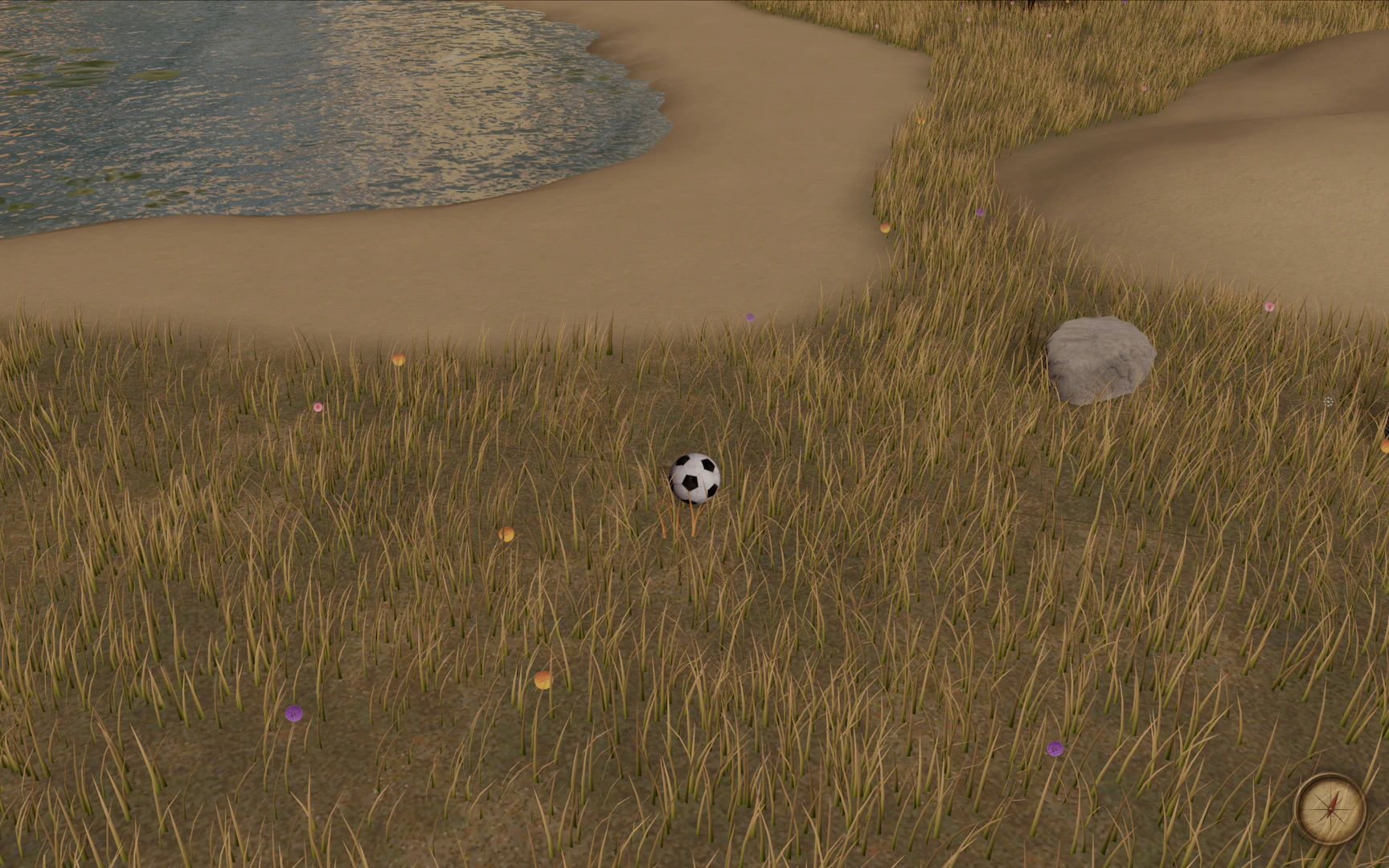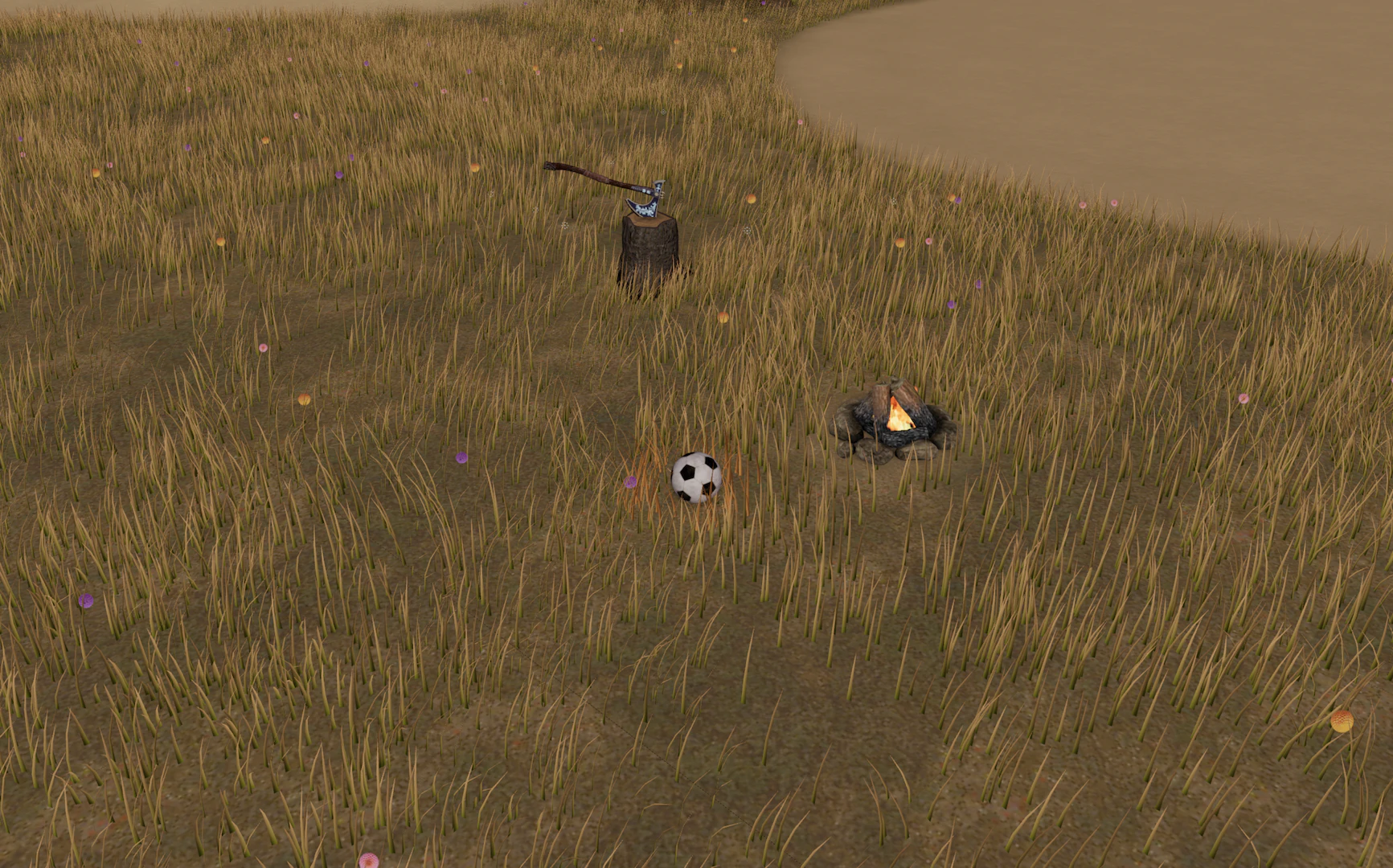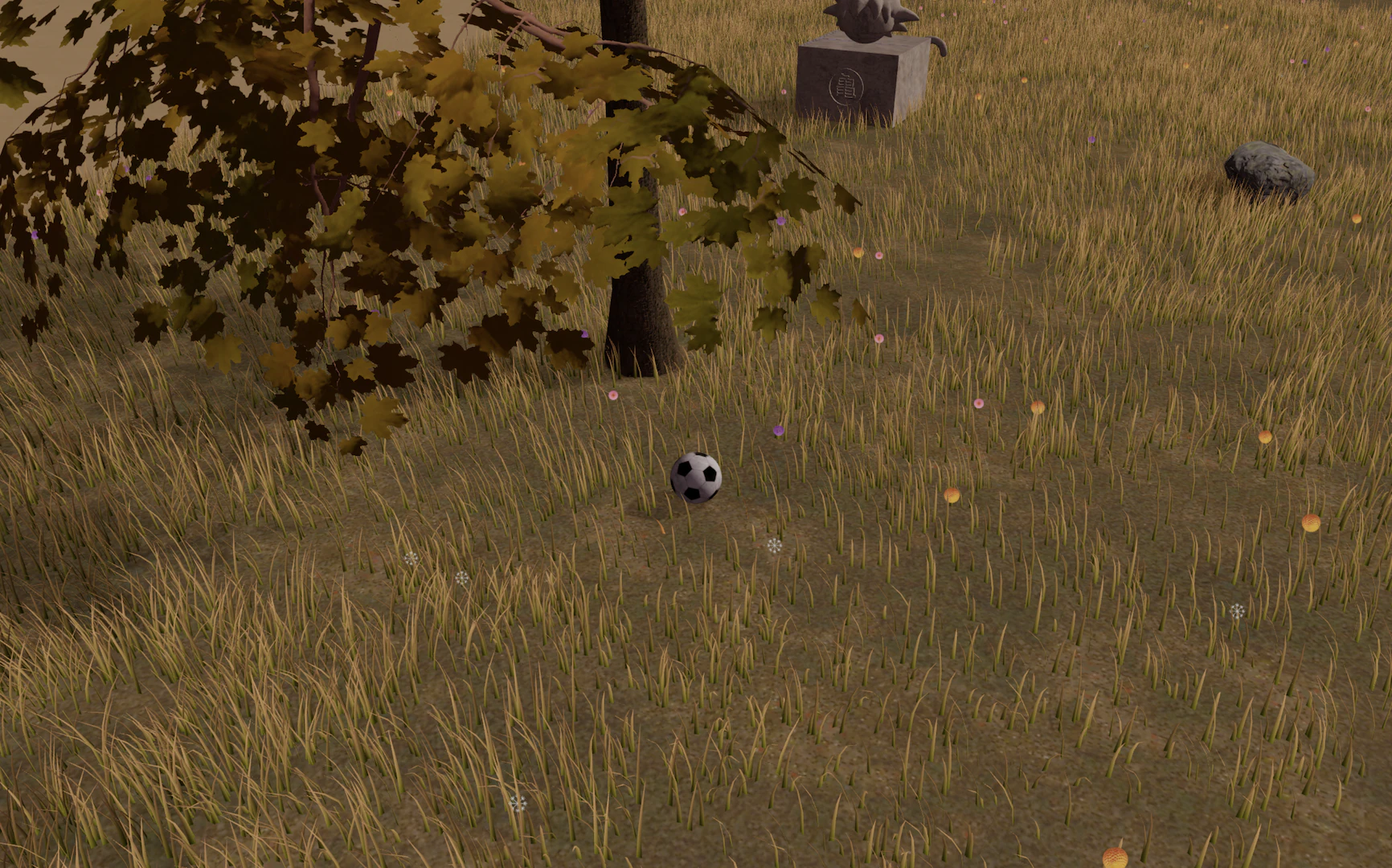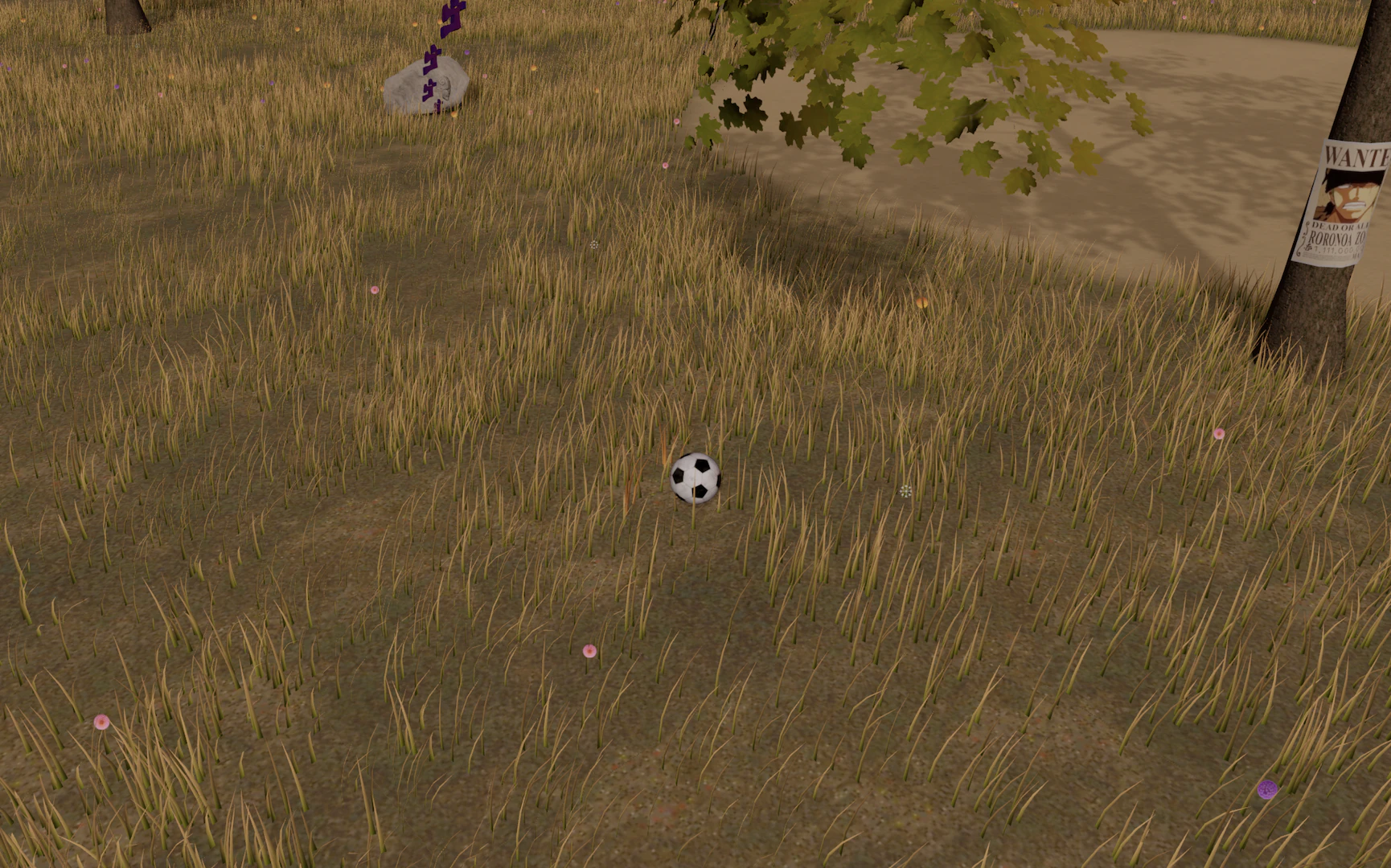Revo Realms [2025]
Born as a 3D open-world portfolio, it grew into a sandbox for experimenting
with TSL (Three.js Shading Language), physics and advanced graphics
programming and optimization techniques. Built with
Three.js, WebGPU and TypeScript, it
combines interactive terrain, procedural vegetation, water, fire, and
spatial audio, with subtle references to the worlds and stories I love.
- Built a compute-driven foliage pipeline: per-instance soft culling, animation, interaction, and dynamic effects, no CPU round trips, entirely on the GPU.
- Optimized third-party models in
Blendervia polycount reduction, hidden-geometry removal, and custom texture atlases. - Created a fire system using a similar compute pipeline to foliage, handling transforms and lifetime fully in a GPU compute shader with pooled particles and custom color blending to convey both heat and depth.
- Performance: Averages ~8 ms per frame (~120 FPS) on a MacBook Pro M2, rendering at 2268×1473 (DPR 1.5) with < 20 draw calls per frame.




RaidoA journey in motionA collision of worlds
















